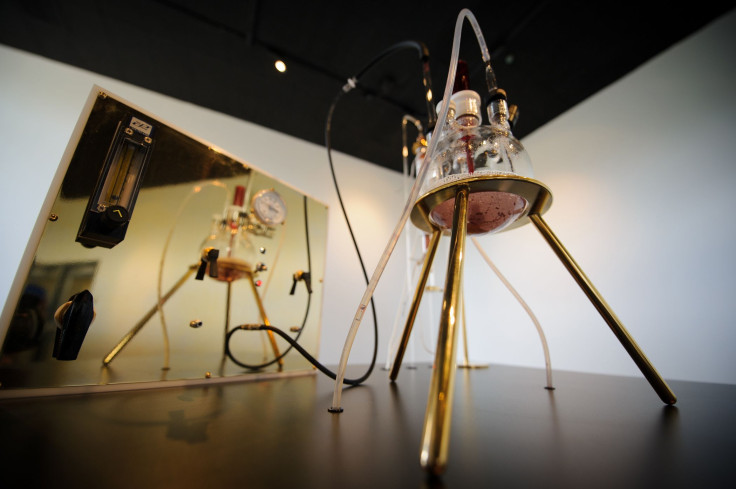Bacteria's Resistance to Toxic Chemicals Lets It Produce 24K Gold

Researchers have discovered that resistance to incredible amount of toxicity makes a bacterium produce solid 24 karat gold.
Cupriavidus metallidurans bacterium, which can withstand high levels of toxicity, was studied by the researchers from Michigan State University.
"Microbial alchemy is what we're doing - transforming gold from something that has no value into a solid, precious metal that's valuable," said Kazem Kashefi, assistant professor of microbiology and molecular genetics.
The researchers used the bacteria in their art exhibit called "The Great Work of the Metal Lover," that combines biotechnology and art to turn liquid gold (thought to be one of the more toxic chemicals in nature) into 24-karat-gold. The exhibit has gold plated hardware, bacteria and a bioreactor. The exhibit also has a series of images from an electron microscope, according to a news release from the Michigan State University.
The researchers exposed the bacteria to high levels of gold chloride. Within a week, the bacteria were able to transform the liquid into bits of gold.
"This is neo-alchemy. Every part, every detail of the project is a cross between modern microbiology and alchemy. Science tries to explain the phenomenological world. As an artist, I'm trying to create a phenomenon. Art has the ability to push scientific inquiry," said Adam Brown, associate professor of electronic art and intermedia.
However, the production of gold using the bacteria wouldn't be possible as the cost of such production would be too high, the researchers said.
"Art has the ability to probe and question the impact of science in the world, and 'The Great Work of the Metal Lover' speaks directly to the scientific preoccupation while trying to shape and bend biology to our will within the postbiological age," Brown said.
Cupriavidus metallidurans has been studied to understand the effect of heavy metals like mercury, cadmium, lead, chromium on the ecology since the bacterium is highly resistant to these metals.
One 2009 study published in the Proceedings of National Academy of Sciences says that the "bacteria actively contribute to the formation of Au (gold) grains in surface environments." The study outlines the mechanism by which the bacteria can produce gold from a toxic chemical.



























